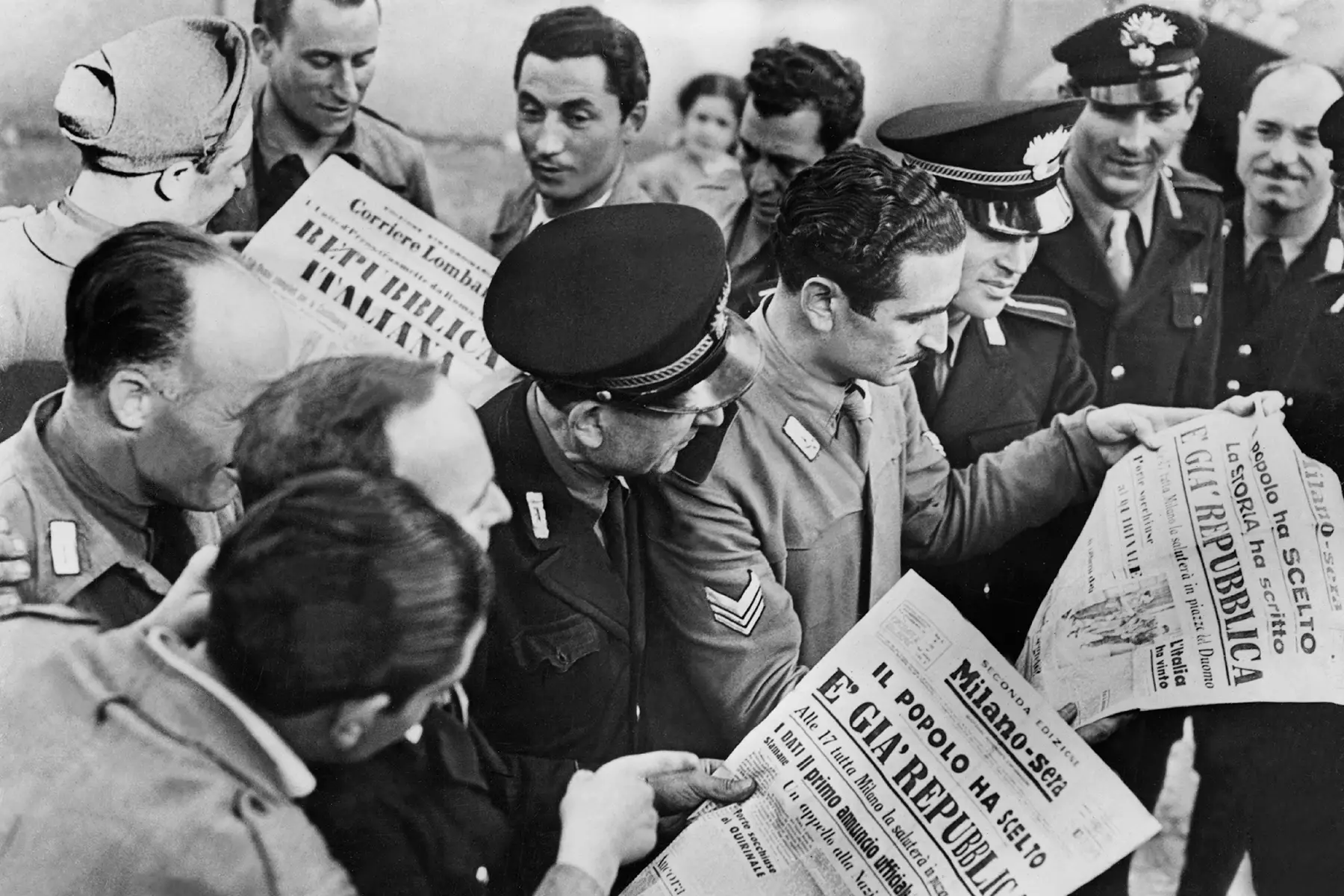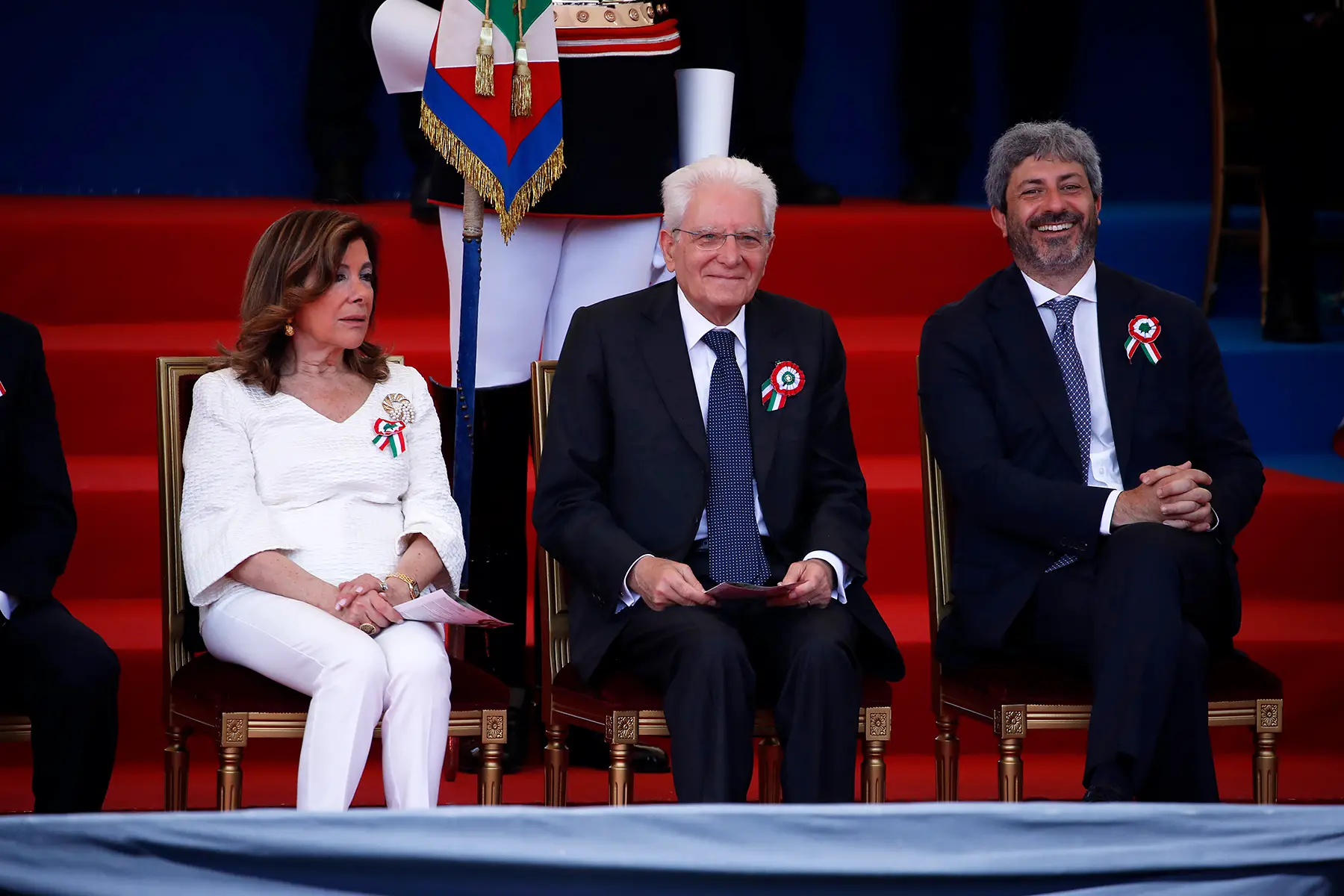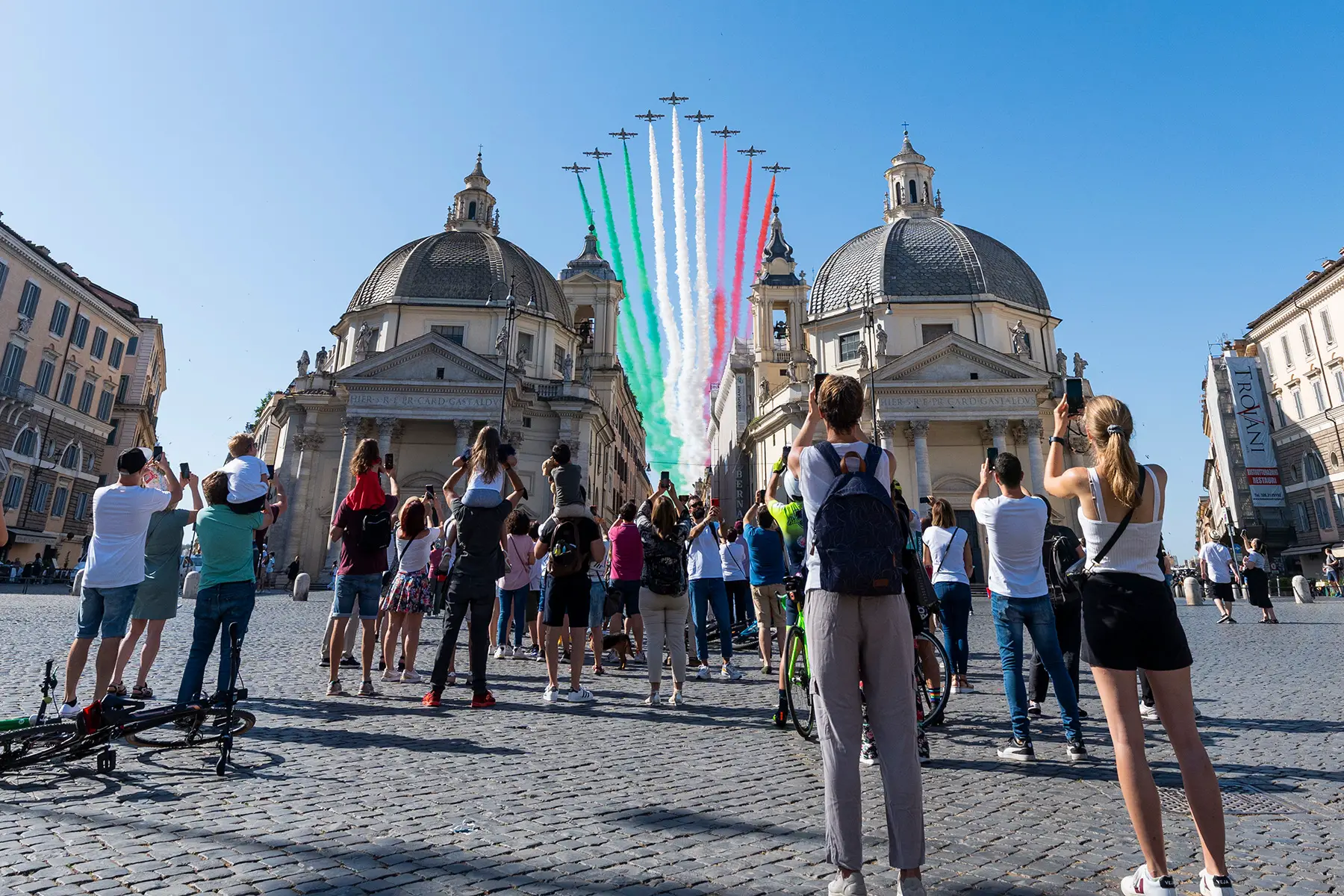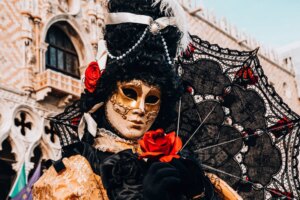Italy is not a country to shy away from having fun and celebrating la dolce vita (the sweetness of life). After all, this is a country that houses the world’s greatest art in its incredible museums, some of the most dramatic natural landscapes, a slew of captivating cities, and – of course – an incredible smorgasbord of food and drink.
Italy loves its festivals and public holidays, too, though perhaps none take over the country so completely as Festa della Repubblica. Get the lowdown on how the country celebrates:
Airbnb
Looking for a home away from home in Italy? Airbnb is a global online community offering accommodation and experiences. They have a selection of over 6 million unique properties available through their secure booking service. So, whether you're going to Milan or Modena, Airbnb has the right short-term let for you.
Introduction to Festa della Repubblica
Each year, on 2 June, Italy celebrates Festa della Repubblica. This national holiday commemorates the 1946 referendum that abolished the monarchy and established the Italian republic.

The main festivities take place in the Italian capital of Rome (Roma). The city hosts a grand festival with a series of official celebrations and more casual parties. As such, you will notice il Tricolore (the official name for the Italian flag) adorning many buildings and public spaces.
It is an official public holiday, and many locals choose to enjoy the day more quietly. For example, they spend the day with family and plenty of food. Of course, since this is Italy’s biggest national festival, there is a pervasive sense of joy throughout the country.
A brief history
Festa della Repubblica is an annual commemoration of one the most important turning points in Italy’s history.
After the end of World War II and the fall of Italian fascism, Italy had to decide its future. On 2 and 3 June 1946, citizens were asked to vote in a referendum. They could decide whether the country would remain a monarchy or become a republic. The republicans used the Italia turrita (national personification of Italy) as their symbol, while monarchists chose the Savoy coat of arms, the emblem of the reigning royals.
The referendum was Italy’s first by universal suffrage. The Italian people voted to expel the House of Savoy in favor of creating a republic. The Italian Republic officially came into being on 11 June 1946 (also declared a public holiday). Because of the vote, Umberto II of Savoy, the last King of Italy, abdicated and went into exile in Portugal. And, because of the new constitution, his descendants also could not enter Italy. This law was repealed only in 2002.
The first official Festa della Repubblica was celebrated on 2 June 1947.
Over the following years, the different elements of these festivities began to take shape. Although Rome is the heart of Italy’s official celebrations, you will find that each city and town has its own way of marking the occasion.
A moveable feast
Because the referendum took place on 2 June, this was the date chosen for the official Festa della Repubblica holiday.

However, in the 1970s, a law was passed to move the holiday to the first Sunday in June. Because Italy was in dire straits economically during that period, this was an attempt to cut costs for the state.
In 2001, President Carlo Azeglio Ciampi moved the holiday back to 2 June. This was part of his more widespread efforts to unite Italians with national symbols.
Celebrating Festa della Repubblica
The best place to enjoy the national holiday is in Rome. Events center around the Altar of the Fatherland (Altare della Patria), better known as the monument to Vittorio Emanuele II, or simply as Vittoriano.
The official celebrations start with the ceremonial raising of the Italian flag and laying of a wreath at the Tomb of the Unknown Soldier (Tomba del Milite Ignoto). Of course, the national anthem, Il Canto degli Italiani (The Song of the Italians), is part of the occasion.
The highlight of the day is a flyover by the Frecce Tricolori (tricolor arrows), the Italian Air Force’s aerobatic demonstration team. Ten fighter jets fly in formation over the city, leaving contrails in green, white, and red – the colors of the Italian flag. All of Italy’s highest officials attend the ceremony, as well as thousands of Italian citizens.
After the events at the Altare della Patria, the Festa della Repubblica festivities continue throughout Rome. The President drives to the Via dei Fori Imperiali (i.e., the central road that runs in a straight line from the Piazza Venezia to the Colosseum) to watch a grand parade of regiments from the Italian military. Throughout, all members of the government wear an Italian tricolor cockade on their jackets.
After the official ceremonies end, the public can enjoy access to the gardens of the Quirinal Palace (Palazzo del Quirinale) – the office of the President of the Italian Republic. There, they can watch performances by military bands such as the Italian Army and Carabinieri. There are also two solemn ceremonies: the Changing of the Guards of the Corazzieri Regiment and the Fanfare of the Carabinieri Cavalry Regiment.
Where to celebrate Festa della Repubblica?
They say all roads lead to Rome, and this has never been more true than when the country celebrates Festa della Repubblica. The Eternal City (Città Eterna) is front and center of this grand national celebration, and as such, there is no better place to enjoy the day.

That said, most cities and towns across Italy will mark the holiday in their own way. Depending on where you live, you can enjoy local festivities that include some sort of parade with a significant political figure from the region officiating.
For example, in Florence, spectators can enjoy a procession, complete with locals in fancy Renaissance-style dresses from the former Florentine Republic and a marching band. Florentine officials also participate in a local flag-raising (alzabandiera) ceremony and lay a wreath in the Italian Unification Square (Piazza dell’Unità Italiana).
In addition, most cities will have casual parties in the streets or parks. Often, there are fireworks in the evening.
Overseas, many Italian embassies will host their own celebrations to mark the day, with the resident ambassador presiding. So, if you are an expat returning home from Italy and want to continue the tradition, it’s a good idea to make high-up friends and get an invite.
Festa della Repubblica traditions
Unlike some other national days (e.g. Koningsdag in the Netherlands or Quatorze Juillet in France), Italy’s Festa della Repubblica does not have many cohesive traditions. As such, it is unlikely that you will see people wearing specific colors or eating designated Italian cuisine, for example. However, there are a few habits that Italians indulge in that you might consider unofficial traditions for the day.
Spot il Tricolore
Italy, like other countries, is prone to overt displays of the flag during Festa della Repubblica. It will be strewn across all manner of buildings, in stores, and sometimes even on locals.

However, the most hair-raising display of il Tricolore is during the flyover by the tricolor arrows in Rome.
Dig into a local meal
Officially, there are no specific foods that are associated with Festa della Repubblica. That said, you will see that most Italians dig into a three-colored feast of local dishes and wines. This could be at home, but if the weather is good, many people will pack up the meal and enjoy a picnic in the great outdoors.
Catch the fireworks
It would hardly be a national celebration without fireworks. So, of course, each city or town will curate its own colorful display. If you are not too tired from the day’s festivities, it is worth finding a city bench and ending the night with a bang.
Business hours
Because it is a public holiday, many places across Italy will be closed for Festa della Repubblica. Or, if they do not close entirely, they will reduce their operating hours for the day.
Many bank branches, fashion boutiques, restaurants, popular museums, and other cultural attractions are closed for the day. Because it is technically a sovereign nation, the Vatican museums are still open.
Public transport is usually still running, though on a public holiday or Sunday schedule.






